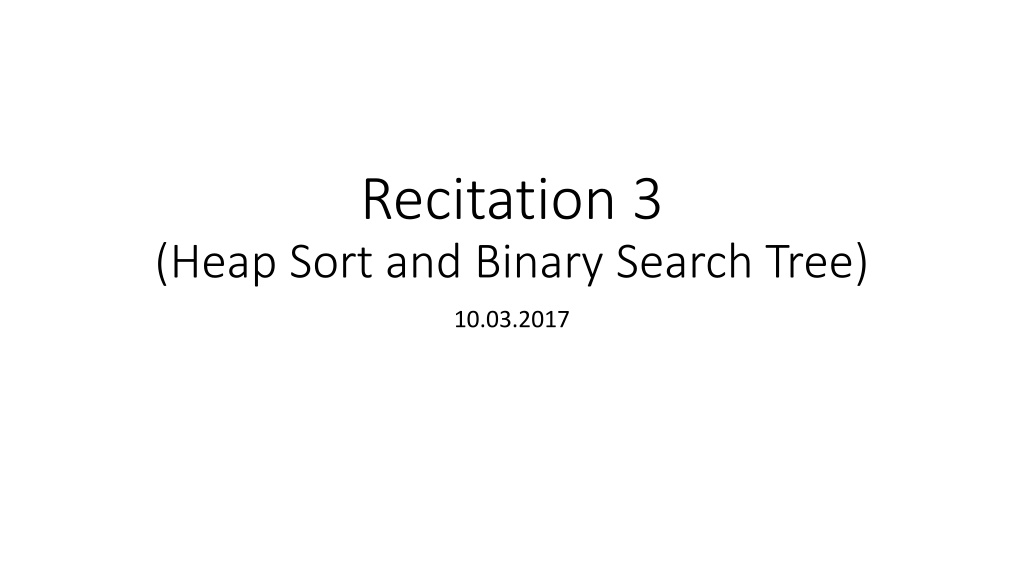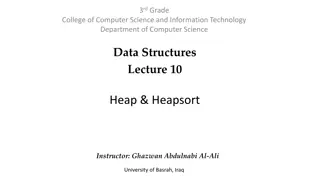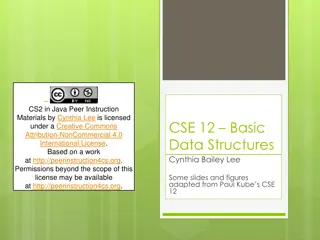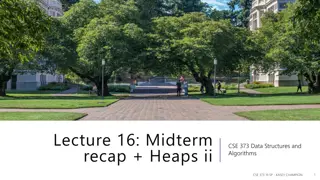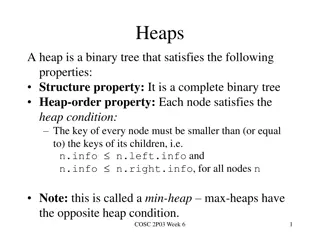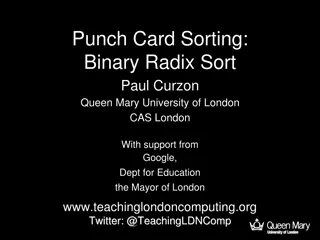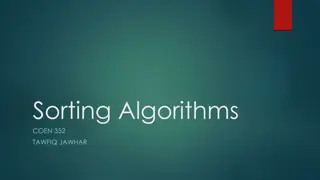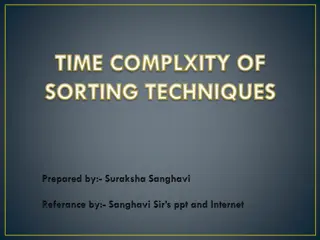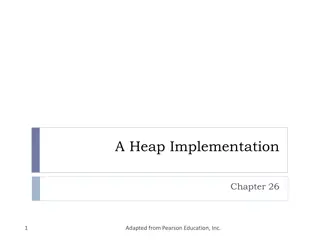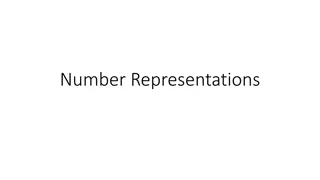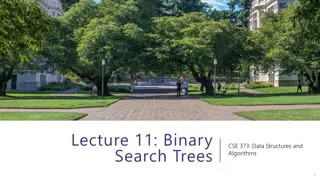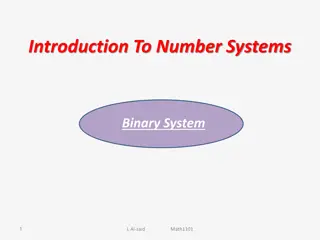Understanding Heap Sort and Binary Search Tree Concepts
Learn about Heap Sort for sorting elements in ascending or descending order, Priority Queue as a data structure supporting key operations, Binary Trees with recursive definitions, and exercises involving priority queue operations. Explore the concepts through visual aids and examples provided in the content.
Download Presentation

Please find below an Image/Link to download the presentation.
The content on the website is provided AS IS for your information and personal use only. It may not be sold, licensed, or shared on other websites without obtaining consent from the author. Download presentation by click this link. If you encounter any issues during the download, it is possible that the publisher has removed the file from their server.
E N D
Presentation Transcript
Recitation 3 (Heap Sort and Binary Search Tree) 10.03.2017
Heap Sort In this sorting algorithm,first build a heap using the given elements. If we want to sort the elements in ascending order,we create a Min Heap And to sort the elements in descending order,we create a Max Heap
Priority Queue Definition: A priority queue is a data structure of items with keys which supports two basic operations: insert a new item, and remove the item with the largest key. (The above definition is assuming a maximizing priority queue. In a minimizing priority queue, the remove operation would remove the item with the smallest key. For these notes, we assume a maximizing priority queue). It means remove the largest or smallest item.
Binary Trees Recursive definition 1. An empty tree is a binary tree 2. A node with two child subtrees is a binary tree 3. All the numbers on the left of the root are smaller than the root and all the numbers on the right are bigger than the root. Is this a binary tree? 56 26 200 28 190 213 18 12 24 27
Exercises 1 Suppose that the sequence P R I O * R * * I * T * Y * * * Q U E * * *U * E (where a letter means insert and an asterisk means remove the maximum) is applied to an initially empty priority queue. Give the sequence of letters returned by the remove the maximum operations.
PP R R [P] I R [P I] O R [P [O] I] * P [O I] R R [P [O] I] * P [O I] * O [I] I O [I I] * I [I] T Y [I I] * I [I] * I
* Q Q U U [Q] E U [Q E] * Q [E] * E * U U * E E
Solution RRPOTYIIUQEU
Exercises 2 Using the conventions of Exercise 2, give the sequence of heaps produced when the operations P R I O * R * * I * T * Y * * * Q U E * * * U * E are performed on an initially empty max-oriented heap.
Solution E
Exercises 3 Draw the BST that results when you insert the keys E A S Y Q U E S T I O N, in that order (associationg the value i with the ith key, as per the convention in the text) into an initially empty tree. How many compares are needed to build the tree?
Solution The total number of comparisons made to build binary search tree is 28(1+1+2+2+3+1+2+4+3+4+5).
Exercises 4 Level-order traversal. Write a method printLevel() that takes a Node as argument and prints the keys in the subtree rooted at that node in level order (in order of their distance from the root, with nodes on each level in order from left to right). Hint: Use a Queue.
BFS is an algorithm for traversing or searching tree or graph data structures.It starts at the root and explores the neighbour nodes first,before moving to the next level neighbours.
Algorithm of the level order traversal For each node, first the node is visited and then it s child nodes are put in a FIFO queue. printLevelorder(tree) 1) Create an empty queue q 2) temp_node = root /*start from root*/ 3) Loop while temp_node is not NULL a) print temp_node->data. b) Enqueue temp_node s children (first left then right children) to q c) Dequeue a node from q and assign it s value to temp_node
